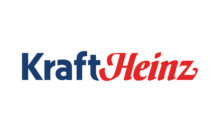Kraft Heinz deferred tax liabilities – nerdy issue, but it could cost you

Having paid up for Kraft Foods, the newly merged Kraft Heinz will need to not only over-deliver on its $1.5bn of projected cost savings by 2017, but also to exploit a network effect (leveraging Kraft brands through Heinz’s stronger international footprint) to kick-start what has been lacklustre individual organic revenue performances for both groups. While still early days, the initial performance post-merger have not been encouraging, with organic revenues deteriorating which leaves the valuation looking exposed if you dig into the balance sheet and start including some of the dull stuff that most pundits ignore.
DTLs nerdy, but important: When you are carrying deferred tax liabilities (DTL) of almost $20bn (>$16 per share) on your balance sheet, what might seem like an academic debate on how to value these becomes a little more pressing. As with acquired goodwill amortisation, the treatment imposed by accounting standards authorities can appear arbitrary and therefore have been easy for investors to discard when chasing some momentum story. For deferred tax liabilities relating to differences on acquired intangibles that are neither discounted for time value or indeed may never even reverse, the easy course has often been to just ignore them as having zero value (eg Stickney & Fridson). While balance sheet DTLs are undoubtedly overstated, there is a body of research (Givoly & Hayn, Sansing) which has provided empirical evidence that these reflect real potential cash flow liabilities and therefore need to be recognised, albeit perhaps nearer 50-60% of their balance sheet values. We have used the lower (more generous to KHC) end of this range in our valuations.
Valuation: As a new entity supported by Warren Buffett there has been a fair bit of puff on this group by market pundits, with the scope to invigorate the US focused Kraft brands through Heinz’s stronger International network. While possible, the start has not been auspicious with Q3 FY15 organic revenues contracting by -2%. In our below indicative valuation we have erred on the generous in our assumptions. Taking a trend growth rating range at between +3% pa and +5% pa, recognising the max possible for tax shield and normalising the FY16 EBITA estimate to include the remaining portion of annual cost savings under the $1.5bn by 2017 programme. We have also taken the 9% prefs at par value rather than at market as well as applied the aforementioned 50% discount to the balance sheet DTL. Notwithstanding all of this, we are struggling to see much above $54 per share on even the upper growth rating range and nearer $30 on the lower.
For more on this, register for our beta test trial for our web app dashboard.
